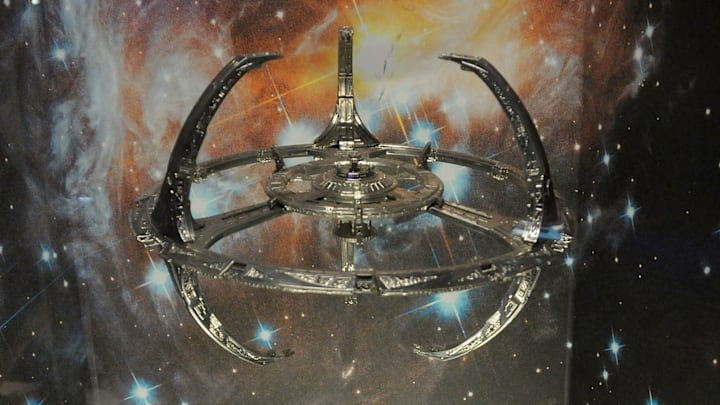These days, it seems that Paramount has countless ideas for new Star Trek shows, and with content growing, we fans sometimes have to pick and choose when we only have so much time to watch.
Some Trek shows produced in the 1990s haven’t aged well, but Star Trek: Deep Space Nine remains a franchise favorite that fans return to often, and for one simple reason: the show’s tonal shifts.
Deep Space Nine’s setting allowed for widely shifting tones
When Deep Space Nine first premiered in 1993, some fans were uncertain about how many stories the writers could tell within its setting, that of a space station at the edge of a stable wormhole. While the addition of the Defiant in season 3 allowed Sisko and the station’s team to leave the station, the serialized storytelling gave characters the opportunity to grow and change, which made tonal shifts feel more natural.
For example, when compared to the more episodic storytelling style prevalent in the original Star Trek series, the serialized style of Deep Space Nine’s writing allowed for a greater range of themes and tones including comedy, tragedy, questions about religion, and the challenges and rewards of different parenting styles that didn’t require resolution inside of a 50-minute episode.
Darker tones question the concept of a future utopia
Much of the Star Trek franchise, even back in 1966 when The Original Series aired, suggested that humans eventually erased war, famine, homelessness, and bigotry. Even Sulu calls racism “primitive thinking” in “Let That Be Your Last Battlefield” (S3E15), but Deep Space Nine challenges the idea of a universal utopia in various ways.
One of the show’s main running plotlines was quite dark on its own. The show opens at the end of a hostile takeover of the Bajorans by the Cardassians, invaders who took what they wanted by force, and created labor and prison camps. At the end of the occupation, which lasted 50 years, 15 million Bajorans were dead. As we see the terror of living during times of war through the eyes of Kira Nerys and the trauma it leaves her with, the tone suggests that we question the idea of a utopian future.
Deep Space Nine’s balanced tones suit streaming platforms
Today’s technology allows us viewers to choose whatever Star Trek series and episodes we want to see or whichever tone suits our current mood. This pick-and-choose option is probably one reason Deep Space Nine became more popular once streaming came along. Do you want a lighthearted episode that takes the characters out of their typical settings? Try “Take Me Out To the Holosuite” (S7E04). Are you in a somber mood and want to wallow? Then “Duet” (S1E19) is a perfect companion episode.
Deep Space Nine’s ability to shift tones between episodes and maintain a serialized storytelling style makes it a popular series choice. Thanks to streaming, it continues to earn new fans, and you can watch it and other Star Trek content on Paramount+.
